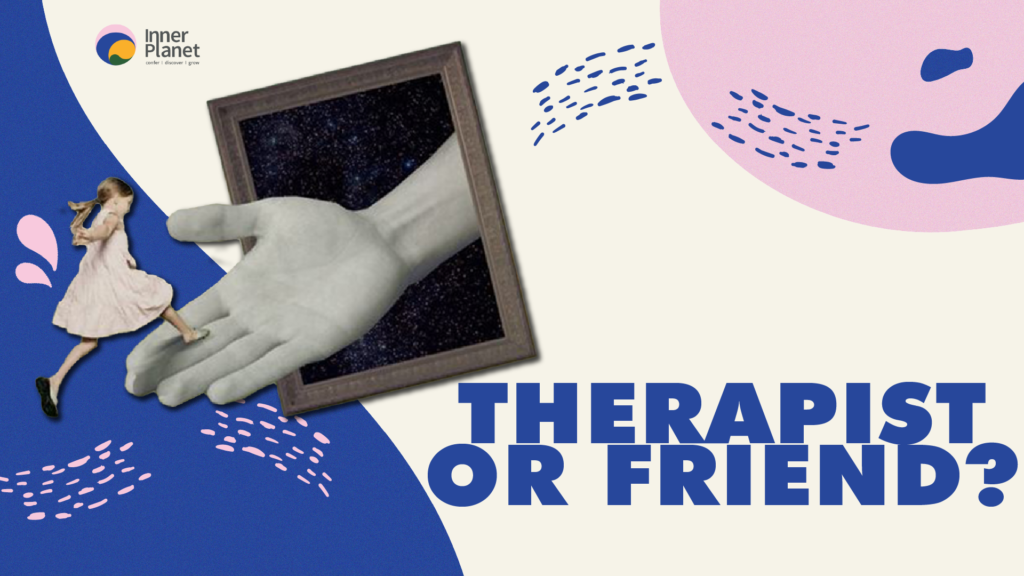What makes therapy so different from a close friendship? Why do professional boundaries in therapy matter so much, and how do they shape the journey toward wholesome mental health? These questions tap into the very essence of what makes the therapeutic relationship unique—and why maintaining that fine line is critical for success.
In therapy, professional boundaries are the cornerstone of an effective therapeutic relationship. These boundaries clearly distinguish therapy from personal relationships by ensuring that the focus remains solely on the client’s well-being. Given the inherent power imbalance between therapist and client, maintaining clear boundaries is not just important—it is essential. These boundaries create a safe space where clients can openly engage with their challenges, trust the therapeutic process, and freely explore their emotions.
Beyond ensuring safety, these boundaries play a pivotal role in managing the complex dynamics that naturally arise in therapy, particularly the phenomenon of transference.
Transference in Therapy
Transference, where clients unconsciously project feelings from past relationships onto their therapist, is a natural and often revealing aspect of therapy. This dynamic can shed light on unresolved issues and relational patterns, offering opportunities for deeper exploration and healing. However, transference also requires careful navigation to ensure that the therapeutic relationship does not become clouded by past emotions.
Maintaining professional boundaries is crucial in managing transference effectively. By doing so, therapists can support the client’s growth while preserving the integrity of the therapeutic environment. This balance is one of the many elements that set the therapist-client relationship apart from personal relationships like friendships, where such boundaries are more fluid and undefined.
Therapist vs. Friendship
While therapy may evoke feelings of closeness, it operates within a framework that is fundamentally different from friendship. The therapeutic relationship is shaped by specific professional practices and ethical standards that guide a professional therapist’s actions and ensure the focus remains on the client’s well-being. Key differences between them include:
- Objectivity: Therapists are trained to maintain objectivity, focusing entirely on the client’s needs, whereas friendships often involve mutual emotional exchange.
- Boundaries: Therapy is bound by clear professional boundaries, ensuring that the relationship remains focused on therapeutic goals, unlike friendships, where boundaries are more flexible.
- Power Dynamics: There is an inherent power imbalance in therapy due to the therapist’s expertise and the client’s vulnerability, while friendships strive for equality.
- Ethical Guidelines: Therapists follow strict ethical guidelines that protect the client, whereas friendships are guided by personal bonds rather than professional codes of conduct.
These differences ensure that the therapist-client relationship remains a safe, focused space for the client’s healing and growth. Unlike friendships, which can be emotionally complex, therapy provides a structured environment where clients can explore their challenges without the entanglements of personal relationships.
Creating a Safe Space
A central responsibility of the counselling psychologist is to cultivate a safe, non-judgemental environment where clients can freely explore their thoughts and emotions. This space, built on a foundation of empathy, respect, and confidentiality, is essential for clients to engage deeply in the therapeutic process without fear of judgement.
Therapists achieve this by upholding ethical boundaries and maintaining professional conduct. These boundaries keep the therapeutic relationship focused on the client’s healing, preventing any personal entanglements that could disrupt the process.
This careful balance is not just about maintaining professionalism—it is directly linked to the success of therapy itself. By safeguarding the therapeutic frame, boundaries allow therapy to operate within a consistent structure, ensuring that the relationship stays focused on the client’s journey.
The Therapeutic Alliance
The therapeutic alliance—defined by mutual trust and collaboration between therapist and client—is a vital component of successful therapy. This alliance is as important as the specific techniques used, since its strength frequently determines the overall effectiveness of the process. The alliance rests on three essential pillars: agreement on therapy goals, a shared understanding of the methods to achieve those goals, and a bond of trust that allows for open and honest communication.
Building this alliance early in therapy lays a foundation for meaningful progress. It provides clients with the security they need to explore difficult emotions and experiences, knowing their therapist is a reliable and supportive partner in their journey. However, the success of this alliance also depends on clients having a clear understanding of what therapy can and cannot provide, helping to dispel common misconceptions about the therapeutic relationship.
Misconceptions About Therap
Misunderstandings about the therapist-client relationship can create obstacles in therapy. Many clients may come into therapy with preconceived notions about how the relationship should work, which can sometimes lead to frustration or confusion. Some common misconceptions include:
- Therapists have all the answers: In reality, therapists act as guides, helping clients discover their own insights rather than providing ready-made solutions.
- Therapy is like friendship: Although therapy can evoke feelings of closeness, it is a professional relationship with boundaries, unlike the reciprocal nature of friendships.
- Therapists are unaffected by their work: Therapists are human, too, and must actively manage their emotional responses through self-care to remain effective.
Addressing these misconceptions is crucial for setting realistic expectations and fostering a stronger, more productive therapeutic relationship. When clients understand the true nature of therapy, it allows them to engage more openly and trust the process.
Ethical Responsibilities
Ethical principles guide a therapist’s behaviour. These principles are designed to prioritize, and protect the client’s well-being and the integrity of the therapeutic process. Ethical practice leads the way to strong and wholesome therapeutic alliances. Therapists navigate several key ethical responsibilities, including:
- Informed Consent: Ensures that clients fully understand what therapy involves before agreeing to it.
- Confidentiality: Keeps everything shared in therapy private, creating a secure space for open dialogue.
- Avoiding Dual Relationships: Prevents any outside relationship—whether social or professional—from interfering with the therapy’s focus and objectivity.
These ethical guidelines protect the client and create a foundation for a respectful and trustworthy therapeutic environment. Navigating these ethical responsibilities also includes managing the natural feelings of closeness or friendship that may arise during therapy.
Managing Closeness in Therapy
Feelings of closeness or even friendship towards a therapist are not uncommon in therapy. These emotions, often linked to transference, can provide valuable insight into the client’s relational patterns. However, they must be addressed within the professional boundaries that define the therapeutic relationship.
Clients may feel uncertain about whether their therapist likes them or worry about being a burden. These concerns are best addressed through open communication, where the therapist can help the client explore these feelings in a way that is both supportive and professionally appropriate. Maintaining this balance of empathy and boundary-setting becomes the key to ensuring that the therapeutic relationship’s focus on client’s growth.
Ultimately, it is this professional therapeutic relationship, with its unique blend of support and structure, that offers clients the opportunity for meaningful change.
A professional therapeutic relationship provides a unique space for personal growth, offering structured support and confidentiality that personal relationships cannot. Both are important and have their places in our life. The boundaries and ethics in therapy are essential for creating an environment conducive for client’s self exploration and achieving meaningful change.
If you ever need help, or want to experience the sustainable and transformative power of therapy, we’re only a call away!
References
- Ardito, R. B., & Rabellino, D. (2011). Therapeutic alliance and outcome of psychotherapy: Historical excursus, measurements, and prospects for research. Frontiers in Psychology, 2, 270. https://doi.org/10.3389/fpsyg.2011.00270
- Norcross, J. C. (Ed.). (2011). Psychotherapy relationships that work: Evidence-based therapist responsiveness (2nd ed.). Oxford University Press.
- Norcross, J. C. (Ed.). (2011). Psychotherapy relationships that work: Volume 2 Evidence-Based Therapist Responsiveness. Oxford University Press.
- Pope, K. S., & Vasquez, M. J. T. (2016). Ethics in psychotherapy and counselling: A practical guide (5th ed.). Wiley.
- Searles, H. F. (1979). Countertransference and related subjects: Selected papers. International Universities Press.
- Whitfield, C. L. (1993). Boundaries and relationships: Knowing, protecting, and enjoying the self. HCI.
- Yalom, I. D. (2002). The gift of therapy: An open letter to a new generation of therapists and their patients. HarperCollins.


